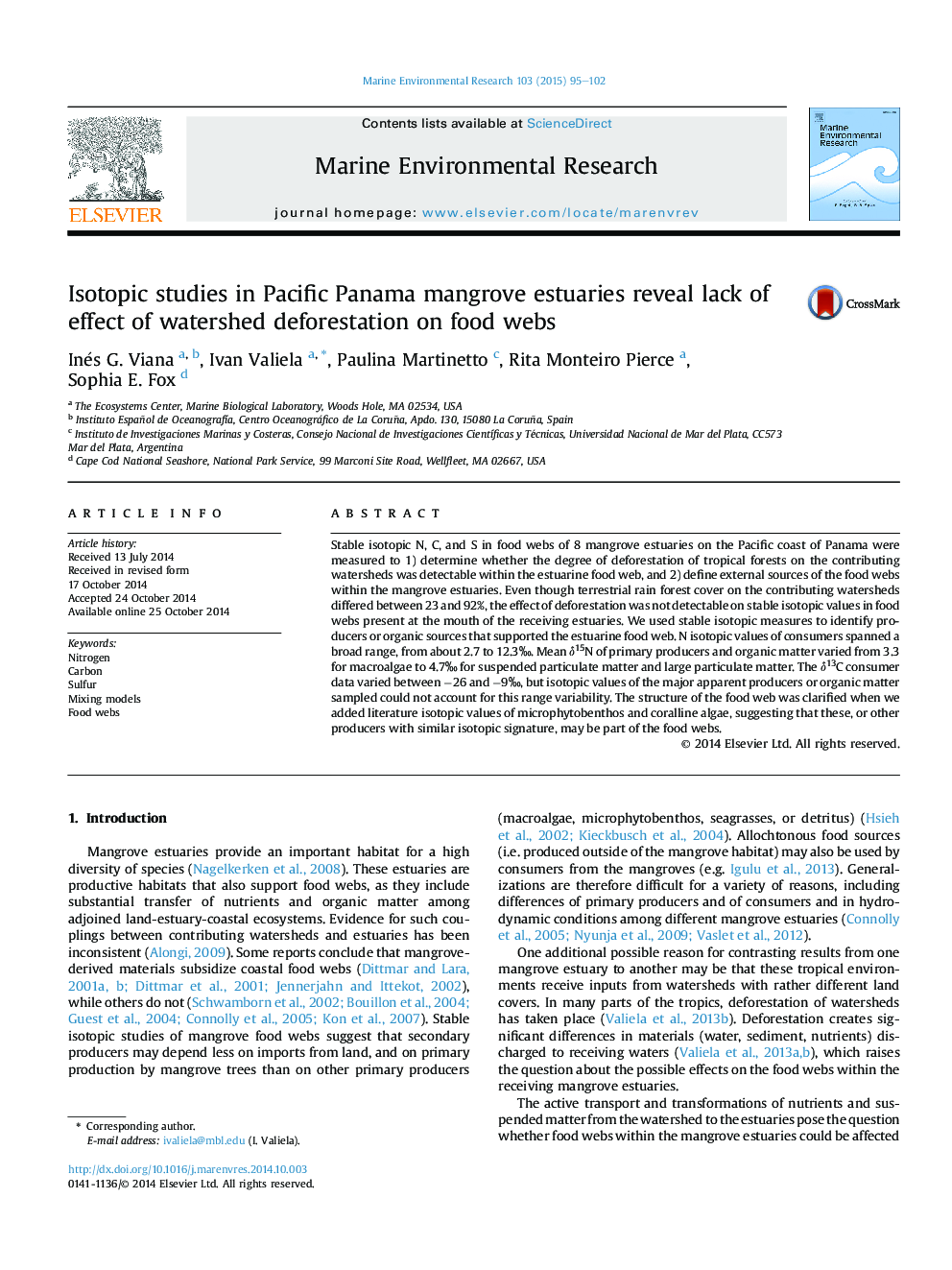| Article ID | Journal | Published Year | Pages | File Type |
|---|---|---|---|---|
| 4550730 | Marine Environmental Research | 2015 | 8 Pages |
•Stable isotopes of Panamanian mangrove food webs of the Pacific coast were studied.•Different upstream land uses do not influence food webs at the estuary mouth.•Mangrove estuary sources studied do not support food webs.
Stable isotopic N, C, and S in food webs of 8 mangrove estuaries on the Pacific coast of Panama were measured to 1) determine whether the degree of deforestation of tropical forests on the contributing watersheds was detectable within the estuarine food web, and 2) define external sources of the food webs within the mangrove estuaries. Even though terrestrial rain forest cover on the contributing watersheds differed between 23 and 92%, the effect of deforestation was not detectable on stable isotopic values in food webs present at the mouth of the receiving estuaries. We used stable isotopic measures to identify producers or organic sources that supported the estuarine food web. N isotopic values of consumers spanned a broad range, from about 2.7 to 12.3‰. Mean δ15N of primary producers and organic matter varied from 3.3 for macroalgae to 4.7‰ for suspended particulate matter and large particulate matter. The δ13C consumer data varied between −26 and −9‰, but isotopic values of the major apparent producers or organic matter sampled could not account for this range variability. The structure of the food web was clarified when we added literature isotopic values of microphytobenthos and coralline algae, suggesting that these, or other producers with similar isotopic signature, may be part of the food webs.
